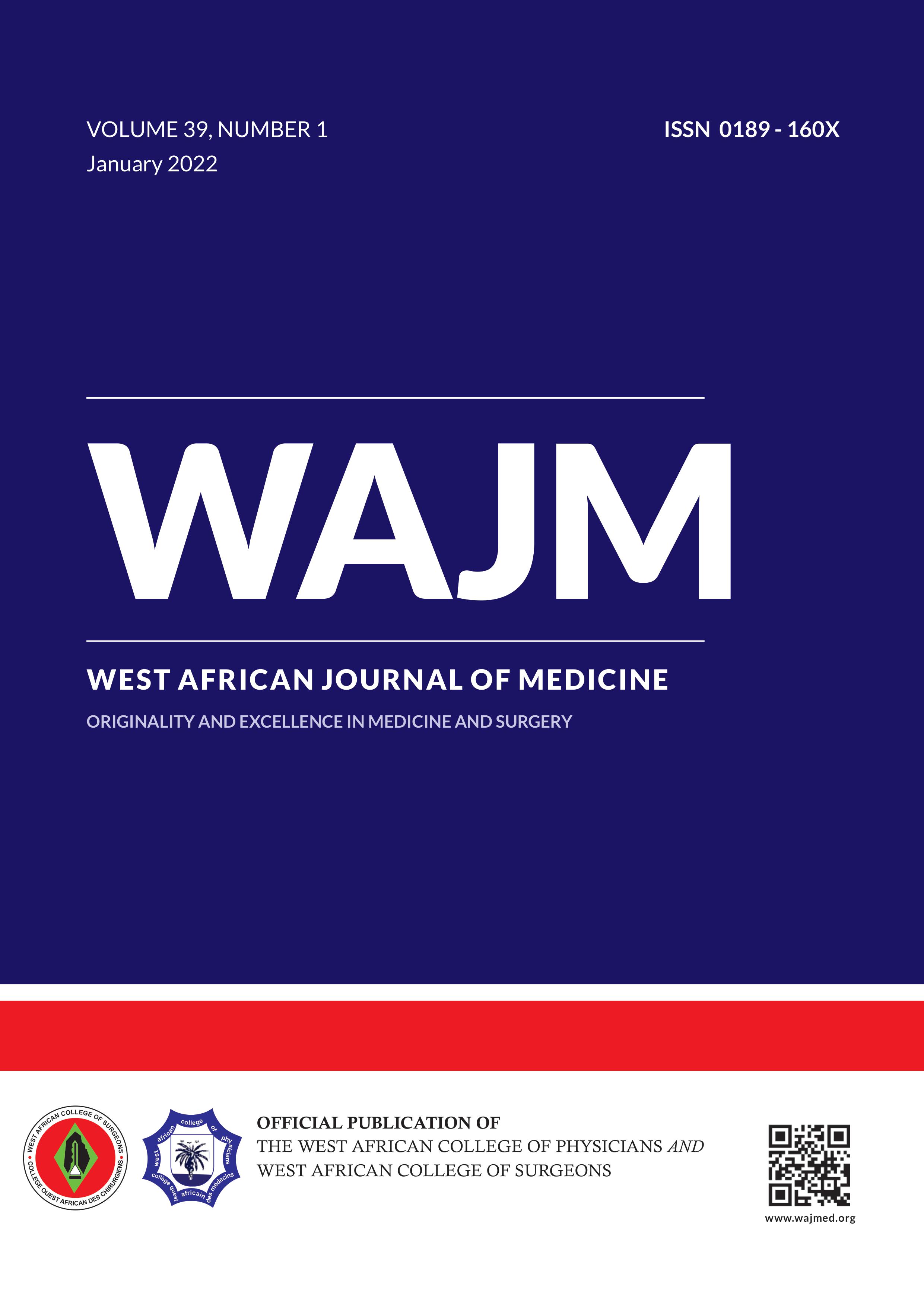ORIGINAL: Efficacy of Hexetidine, Thymol and Hydrogen Peroxide-Containing Oral Antiseptics in Reducing Sars-Cov-2 Virus in the Oral Cavity: A Pilot Study
West Afr J Med. 2022 January; 39(1): 83-89
Keywords:
SARS-CoV-2; hexetidine; hydrogenperoxide; oral antiseptics; thymol.Abstract
Background: Studies have demonstrated the role of sputum as a site of severe acute respiratory syndrome-coronavirus-2 (SARSCoV-2) transmission. However, there is limited literature on the virucidal efficacy of oral antiseptics against SARS-CoV-2 virus. This study investigated the virucidal efficacy of three oral-antiseptics compared to a placebo-control in the sputum of SARS-CoV-2 infected individuals.
Methodology: A pilot study of adults with SARS-CoV-2 positive results, as determined by reverse transcription-polymerase chain reaction (RT-PCR) of <7 days. The oral antiseptics investigated were: Hexetidine (0.1% w/v); Thymol (0.063% w/v) and H2O2(1.5%) compared to de-mineralized sterile water (Placebo-control). The primary outcome measure was the proportion of negative RT-PCR results at 15-mins, 30-mins, 1-hour, 2-hours and 4-hours After Oral antiseptics Interventions (AOI) compared to the placebo-control. Statistical analysis was done using STATA 15.0 software with p-values of <0.05 considered statistically significant.
Results: Data from a total of 66 participants that were RT-PCR SARS-CoV-2 positive at baseline (0-min) was analysed. At 15-mins AOI, the highest proportion of negativation from sputum samples was observed in the Hexedine group, with 69.2% of the baseline PCR positive cases converting to negative compared to 46.7% in the placebo-control group. In addition, H2O2 demonstrated efficacy at 2-hours AOI compared to placebo-control (62.5% vs 37.5% respectively) and other oral-antiseptics. Across all time-points, the oral-antiseptic groups compared to the placebo-control group, there was no statistically significant difference in the proportion of sputum samples which converted to a negative status (p>0.05).
Conclusion: The findings in this study suggest there was no significant difference in the proportion of participants who converted to a negative sputum status across the treatment groups at various time points. Future studies could compare the cycle threshold (ct) viral titre values of sputum samples to determine quantitative differences.
Authors S A Ogun 1, O Erinoso 2, O O Aina 3, O I Ojo 2, O Adejumo 4, A Adeniran 2, A Bowale 4, C A Olaniyi 2, B M Adedoyin 5, B Mutiu 6, B Saka 6, O Oshinaike 2, W Arabambi 1, F Adejumo 4, O Shuaib 2, A O Salmon 2, H Abdur-Razzaq 7, O F Njokanma 2, O Ojini 8, O Ogboye 7, O Lajide 7, K O Wright 2, A Osibogun 8, A Abayomi 7

